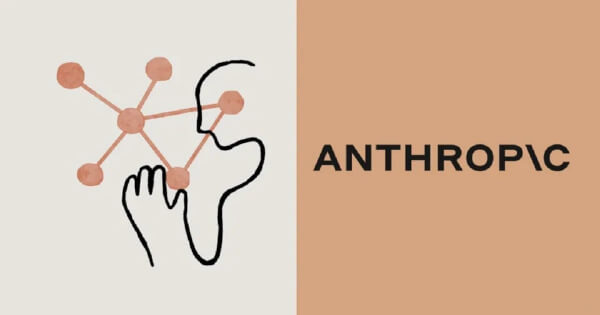Napkin turns text into visuals with a bit of generative AI | TechCrunch

We all have ideas, but effectively communicating them and winning people over is no easy feat. So how can we best accomplish this in an era of information overload and shrinking attention spans?
If you’re engineers Pramod Sharma and Jerome Scholler, you use Napkin, a new “visual AI” platform that the two built together. Napkin is launching out of stealth today with $10 million in funding from Accel and CRV.
Napkin was born out of Sharma’s and Scholler’s frustration with the endless number of documents and presentation decks that have become the norm in the corporate world. Before starting Napkin, Sharma, an ex-Googler, founded educational games company Osmo. Scholler was on Osmo’s founding team and, before that, had stints at Ubisoft, LucasArts and Google.
“Napkin’s core product is targeted toward marketers, content creators, engineers and professionals in the business of selling ideas and creating content,” Sharma told TechCrunch. “The goal is to minimize the time and headache of the design process by turning it into a mostly generative flow.”
“Generative” refers to generative AI. Yes, Napkin’s yet another company betting on the potential of the tech and joins a long, long list. But a few things stand out about the experience, which is strictly web-based for now.
With Napkin, users begin with text — a presentation, outline or some other document along those lines — or have the app generate text from a prompt (e.g. “An outline for best practices for a hiring interview”). Napkin then creates a Notion-like canvas with that text, then appends a “spark icon” to paragraphs of text that, when clicked, transform the text into customizable visuals.
These visuals aren’t limited to images, spanning different styles of flowcharts, graphs, infographics, Venn diagrams and decision trees. Each of these images contains icons that can be swapped out for another in Napkin’s gallery, and you get connectors that can visually link two or more concepts, too. The colors and fonts are editable, and Napkin offers “decorators” such as highlights and underlines to spruce up any element’s appearance.
Once finished, visuals can be exported as PNG, PDF or SVG files, or as a URL that links to the canvas where they were created.
“Unlike existing tools that are adding a generative component to an existing editor, we focus on generation-first experience where editing is added to complement the generation and not other way round,” Sharma said.
I took Napkin for a brief spin to get a sense of what it could do.
At the document creation step, out of a sense of morbid curiosity, I tried to get Napkin to generate something controversial, like “Instructions to murder someone” or “A list of extremely offensive insults.” Whatever AI Napkin is using wouldn’t tell me how to commit murder, but it did comply with the latter request — albeit with an addendum about how the insults were “intended for educational purposes.” (There’s a button in the canvas screen to report this type of AI misbehavior.)
Mischief managed, I threw a TechCrunch article into Napkin — a draft of this one to be precise. And, well, it quickly became apparent where Napkin’s strengths and weaknesses lie.
Napkin does best with simple descriptions, broad strokes of ideas, and narratives with clearly established timelines. The simplest way to put it is, if an idea reads like it could be better illustrated in a visual, Napkin will more often than not rise to the occasion.
When the text is a bit more nebulous, Napkin grasps at straws, sometimes generating visuals that aren’t grounded in that text at all. Take a look at the one below, for example – it verges on nonsensical.
For the visual below, Napkin invented pros and cons out of whole cloth (as generative models are wont to do). Nowhere in the paragraph did I mention privacy issues or Napkin’s learning curve.
Napkin occasionally suggests images or artwork for visuals. I asked Sharma if users might have to worry about the copyright implications of these, and he said that Napkin doesn’t use any public or IP-protected data to generate pictures. “It’s internal to Napkin so users don’t have to worry about rights on generated content,” he added.
I couldn’t help but notice that Napkin’s visuals all abide by a pretty generic, homogenous design language. Some early users of Microsoft’s generative AI features for PowerPoint have described the results from that software as “high school-level,” and the Napkin demo couldn’t help but bring those comments to my mind.
That’s not to suggest some of this isn’t fixable. It’s still early days for Napkin, after all — the platform has plans to launch paid plans, but not anytime soon — and the team is a bit resource-constrained by its size. There’s 10 people at Los Altos-based Napkin at present, and it plans to grow to 15 by the end of the year.
Moreover, few could argue that Sharma and Scholler aren’t successful entrepreneurs, having sold Osmo to Indian edtech giant Byju’s for $120 million in 2019. Accel’s Rich Wong backed Napkin partly because he was impressed by Osmo’s exit — Wong was also an early investor in Osmo.
“Jerome and Pramod have an uncanny ability to take something incredibly challenging from a technical perspective and make it easy for users,” Wong said in a statement. “As a partner to their first company, Osmo, we watched them bring their vision for a new play movement to life with reflective AI. We are excited to support this new chapter as Napkin brings visual AI to business storytelling.”
Sharma says the proceeds from the $10 million round will be put toward product development and hiring AI engineers and graphic designers.
“All of our energy and resources will be going toward how Napkin can generate the most relevant and compelling visuals given text content,” he said. “There are endless ways to visualize and design. We are investing capital on building this depth and improving AI quality.”




